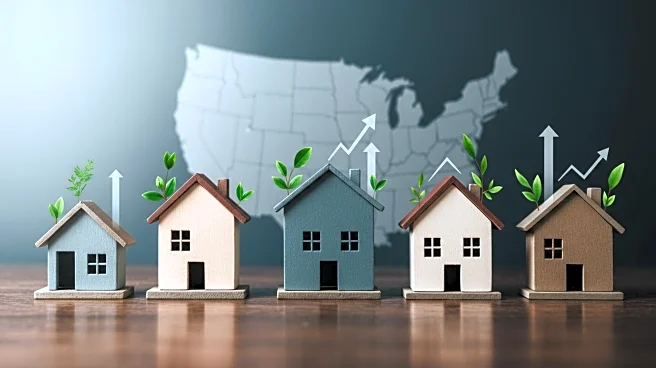What is the story about?
What's Happening?
A recent report from Point2Homes reveals a significant shift in housing preferences among U.S. seniors, with a notable increase in the number of seniors choosing to rent rather than own homes. The report, titled 'U.S. Seniors Rent Like Never Before: 65+ Age Group Up 2.4 Million Renters in a Decade,' highlights that between 2013 and 2023, the number of senior renters aged 65 and older increased by approximately 30%, translating to 2.4 million more seniors renting during this period. This trend is driven by various factors, including the desire for flexibility, downsizing, and lifestyle changes. Seniors are increasingly moving into rental properties to avoid the maintenance responsibilities associated with homeownership. The report also notes significant growth in senior renters in metropolitan areas such as Salt Lake City, Florida, and the Sun Belt region.
Why It's Important?
The shift towards renting among seniors has broad implications for the housing market and senior living communities. As more seniors opt for rental properties, there is a growing demand for smaller, manageable homes and senior living facilities. This trend could influence real estate development, with increased construction of rental properties tailored to senior needs. Additionally, the movement of seniors to rental properties may impact the housing market dynamics, potentially leading to changes in property values and availability. The increase in senior renters also reflects broader economic conditions, including inflation and changing lifestyle preferences, which are prompting seniors to seek more flexible living arrangements.
What's Next?
As the trend of senior renting continues, real estate developers and policymakers may need to adapt to meet the growing demand for senior-friendly rental properties. This could involve the development of more senior living communities and rental units designed to accommodate the needs of older adults. Additionally, there may be increased interest in policies that support affordable housing options for seniors. The ongoing demographic shifts could also lead to changes in community planning and infrastructure to better serve the aging population.
Beyond the Headlines
The increase in senior renters highlights a cultural shift in how aging is perceived and managed in the U.S. Seniors are increasingly prioritizing lifestyle and community over traditional homeownership, reflecting a broader trend towards flexibility and adaptability in later life. This shift may also influence social dynamics, as seniors seek communities that offer social engagement and support. Furthermore, the trend underscores the importance of addressing the unique housing needs of seniors, including accessibility and affordability, to ensure they can live independently and comfortably.
AI Generated Content
Do you find this article useful?












